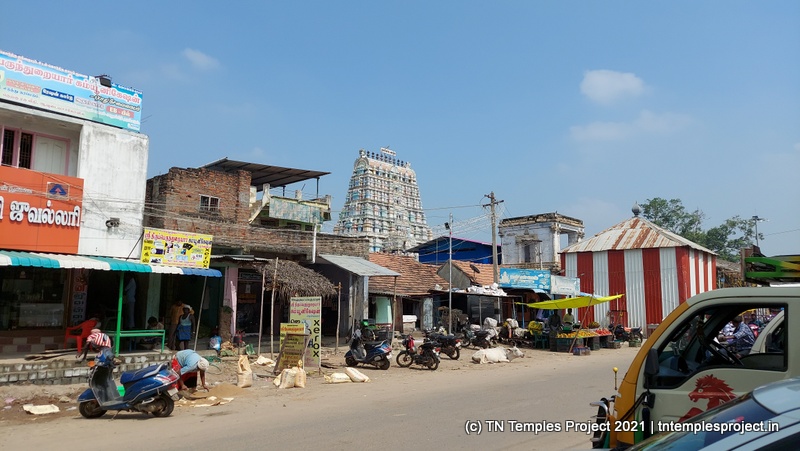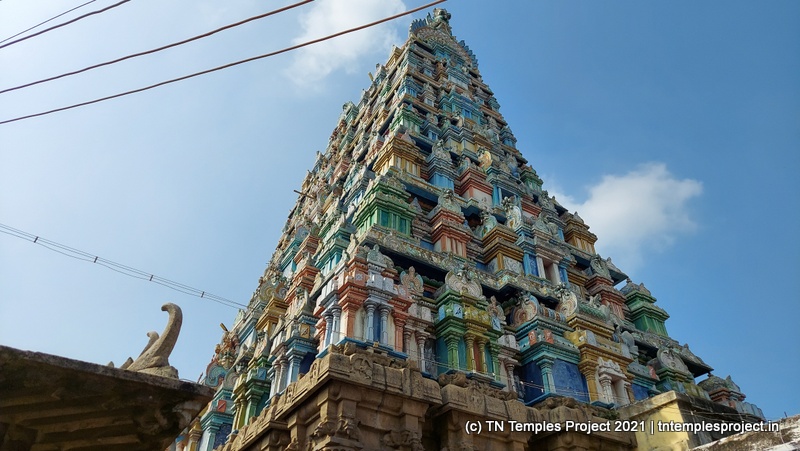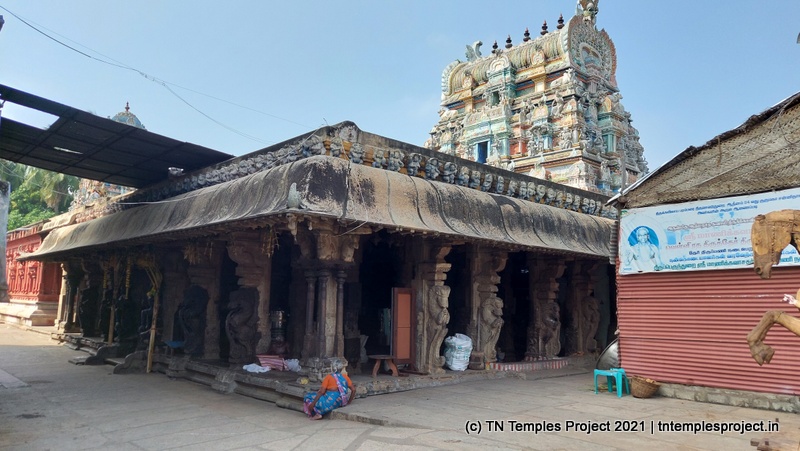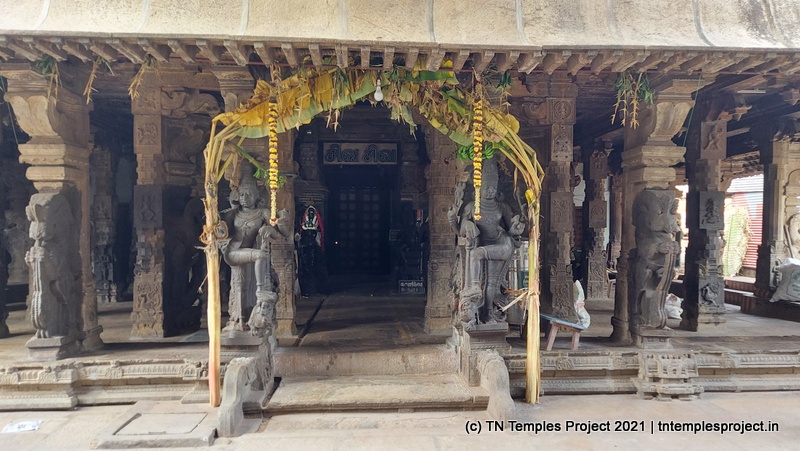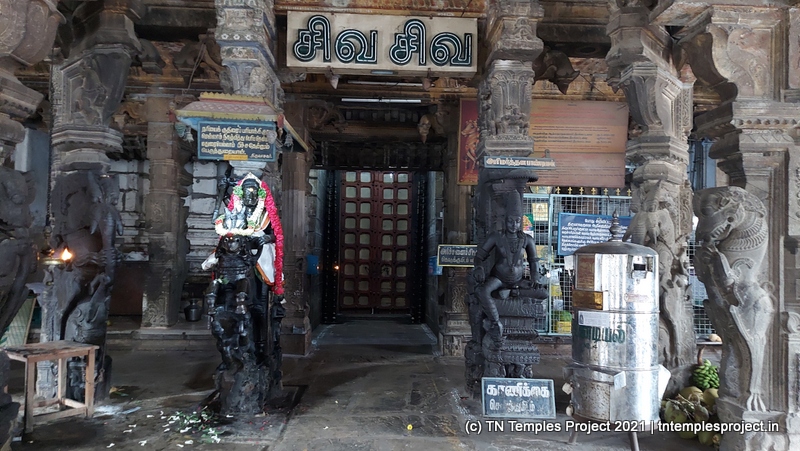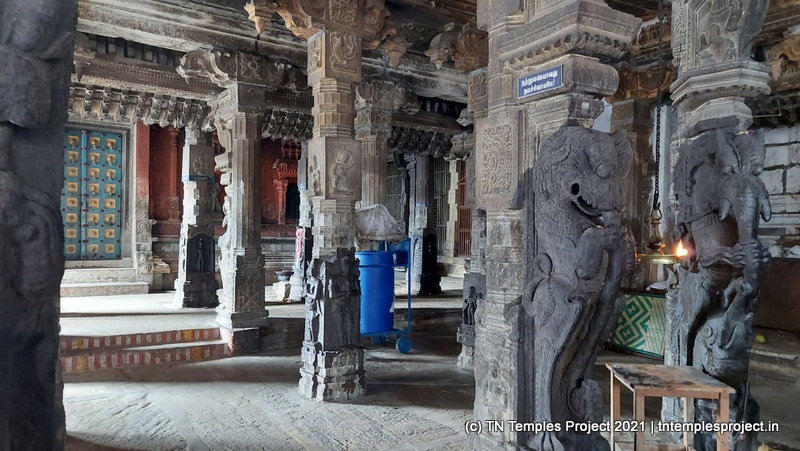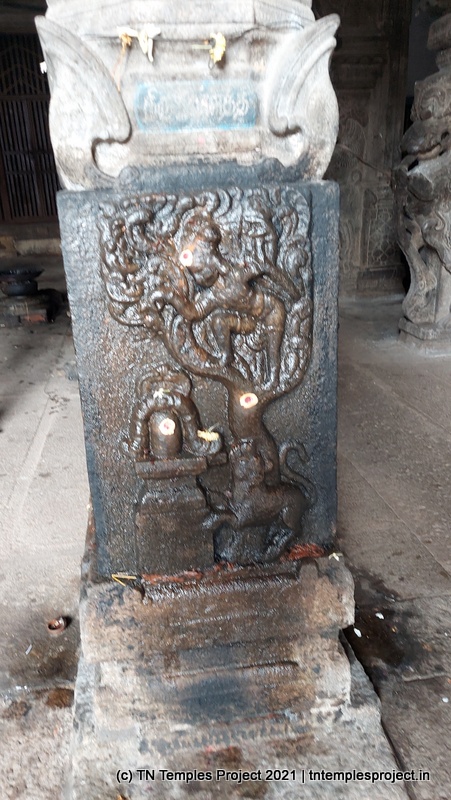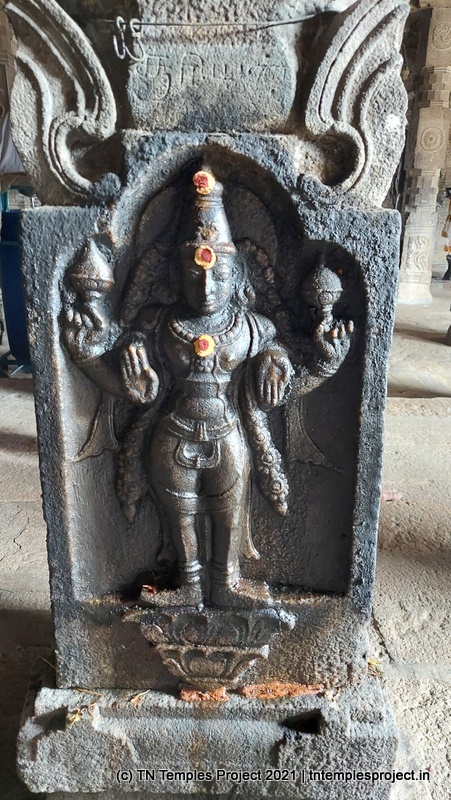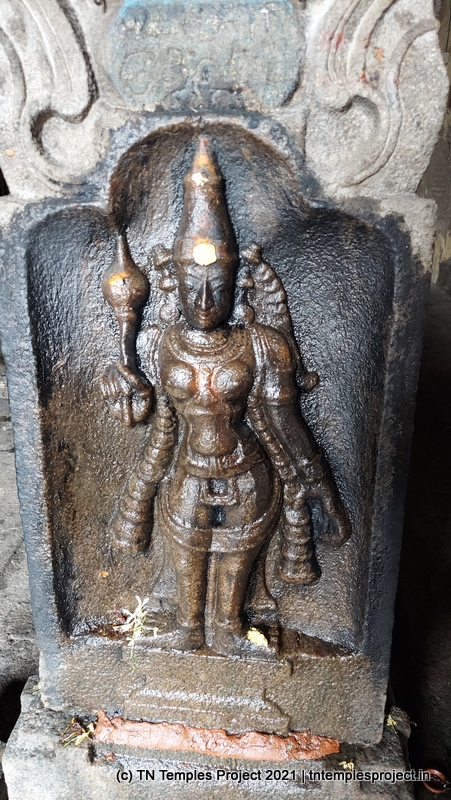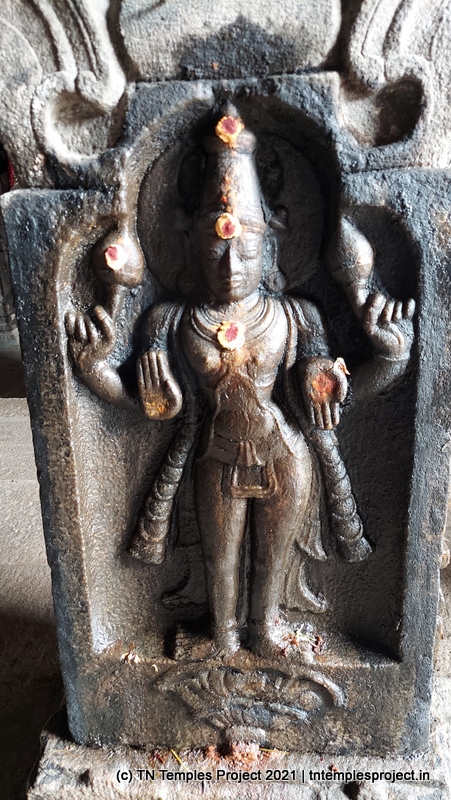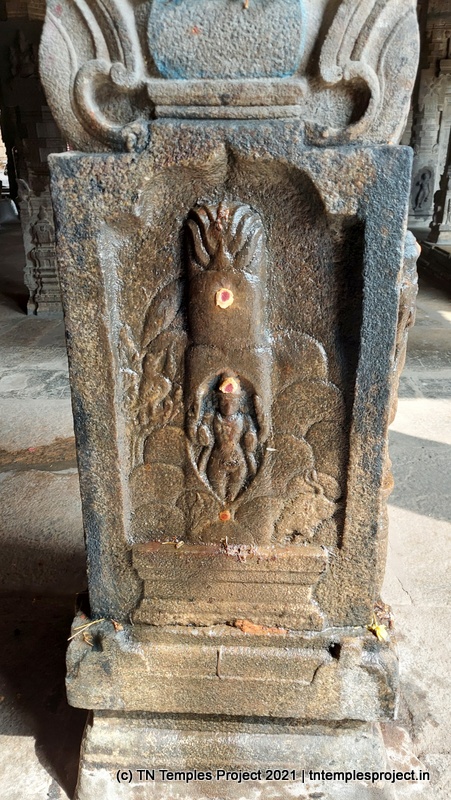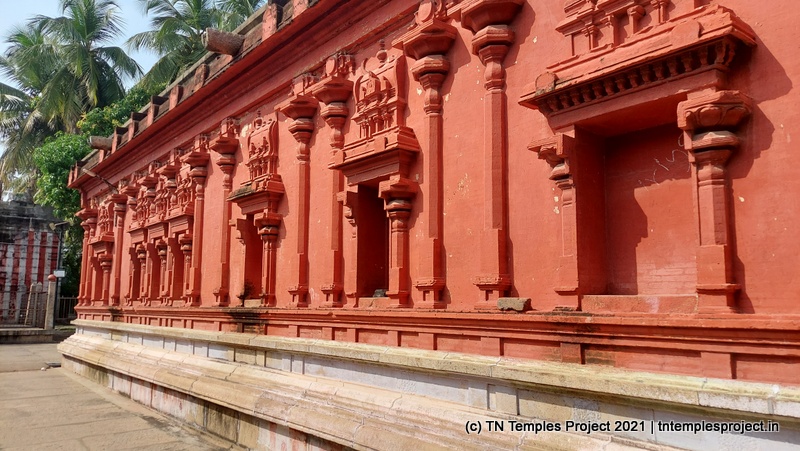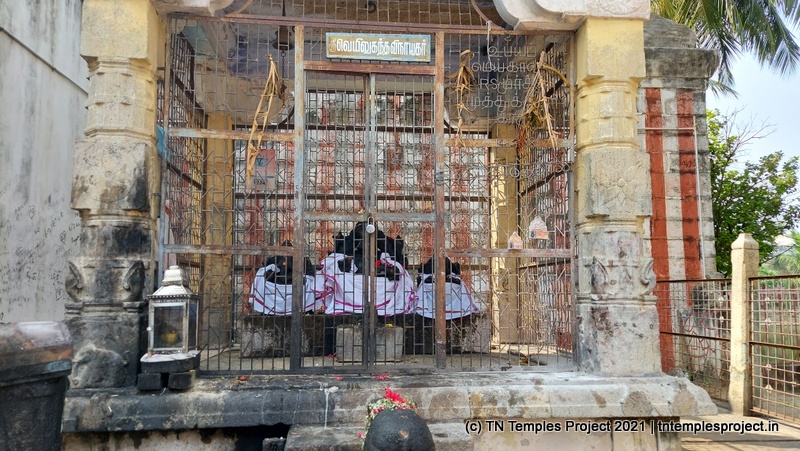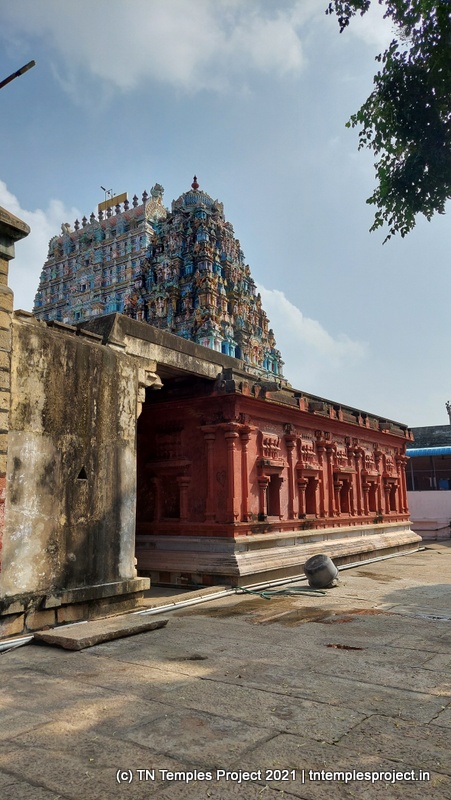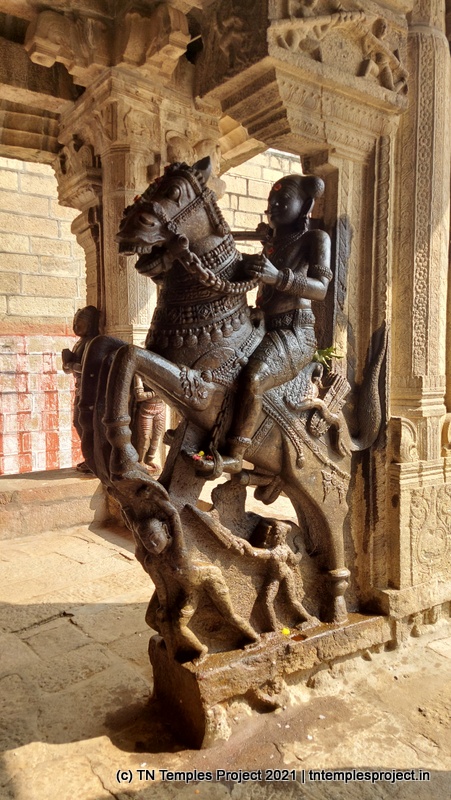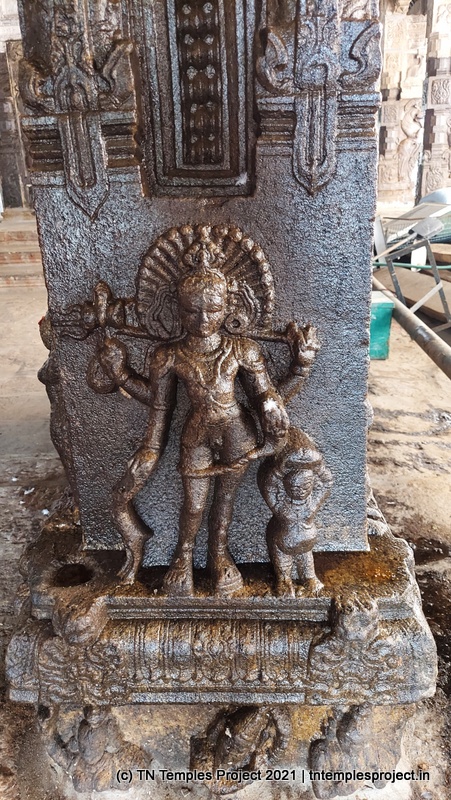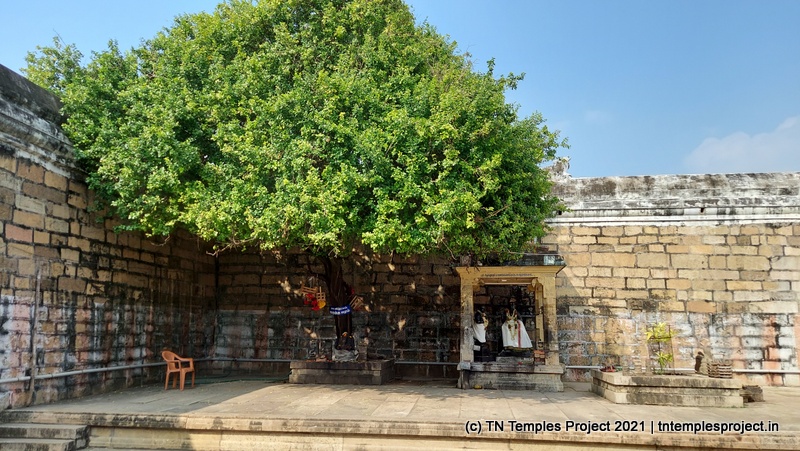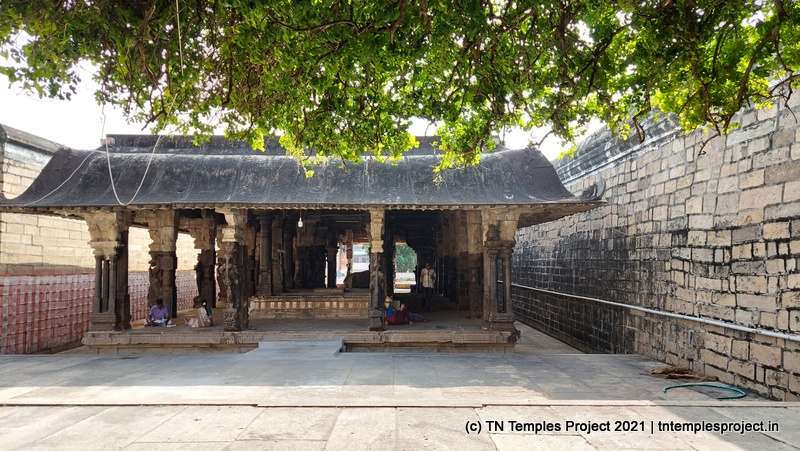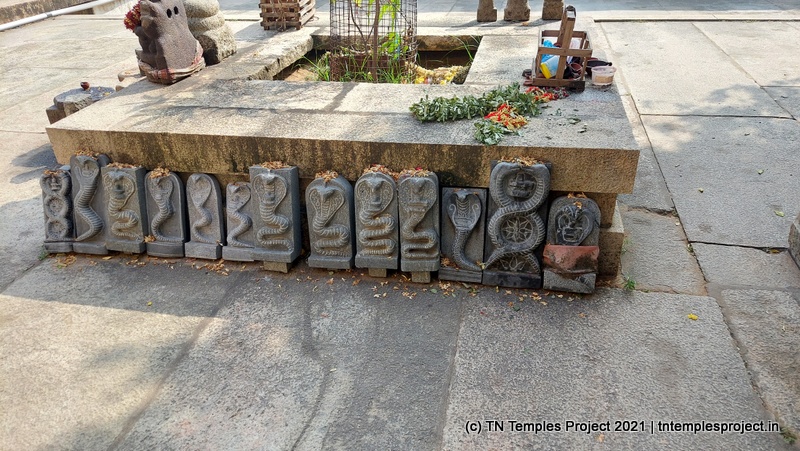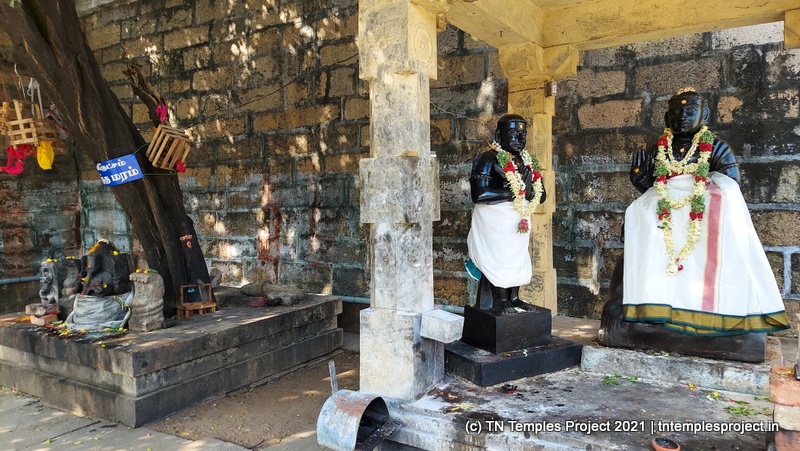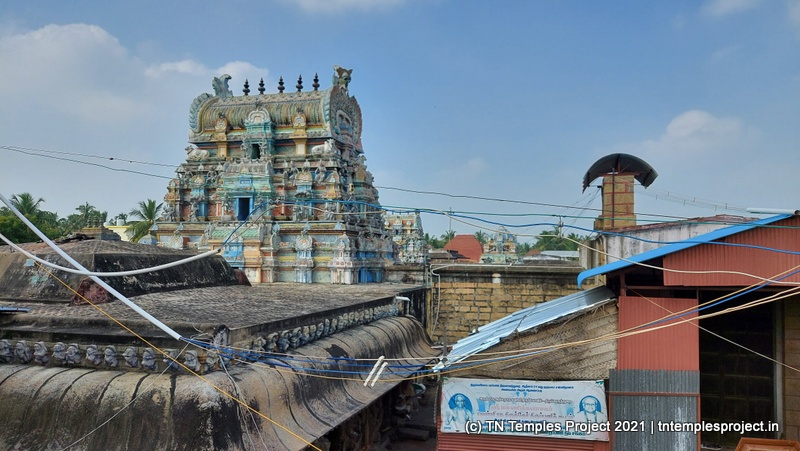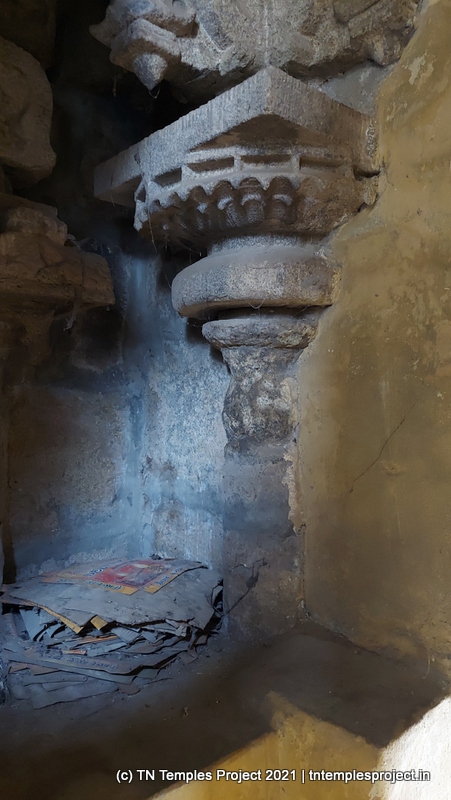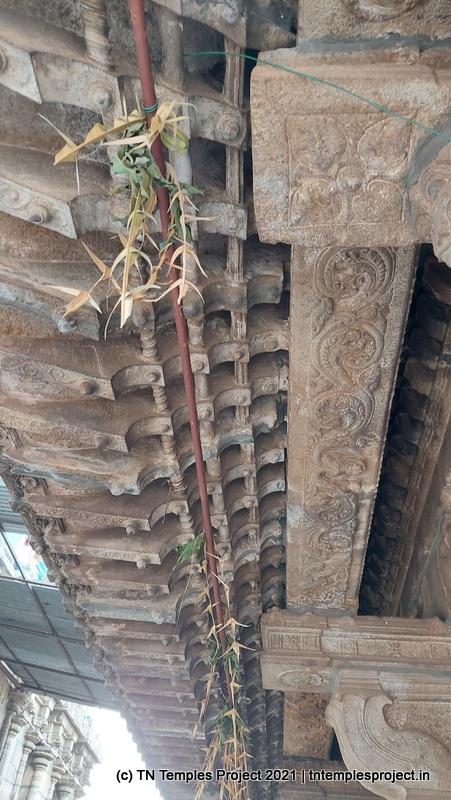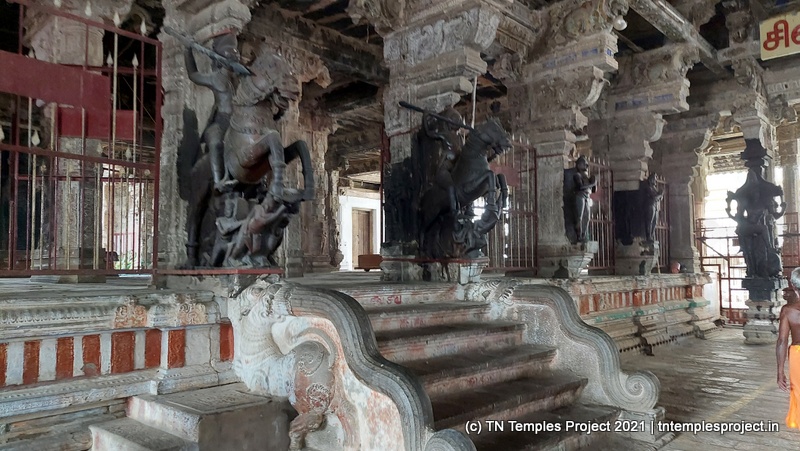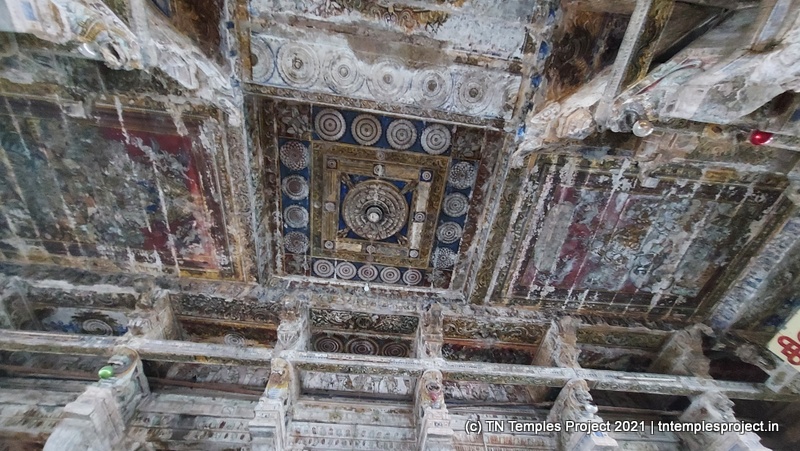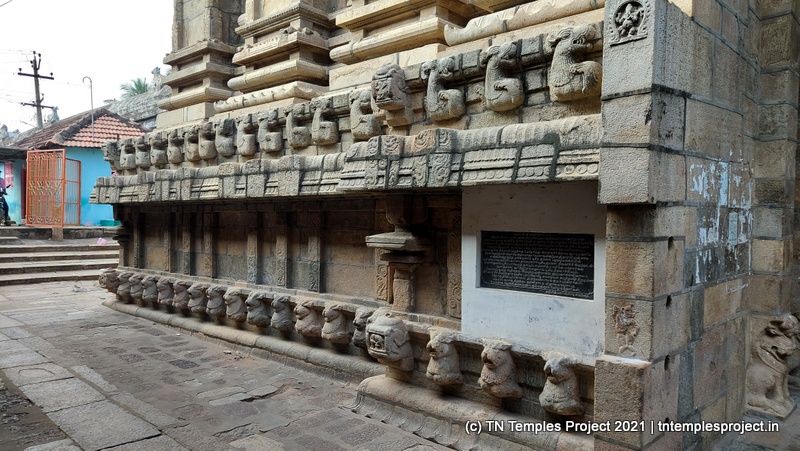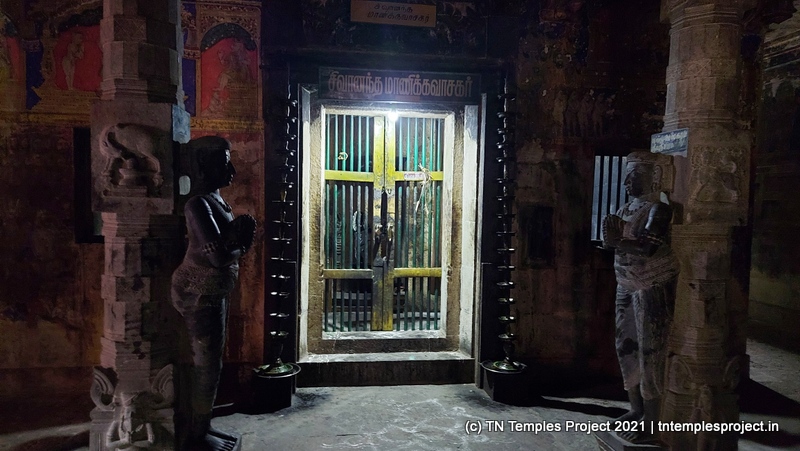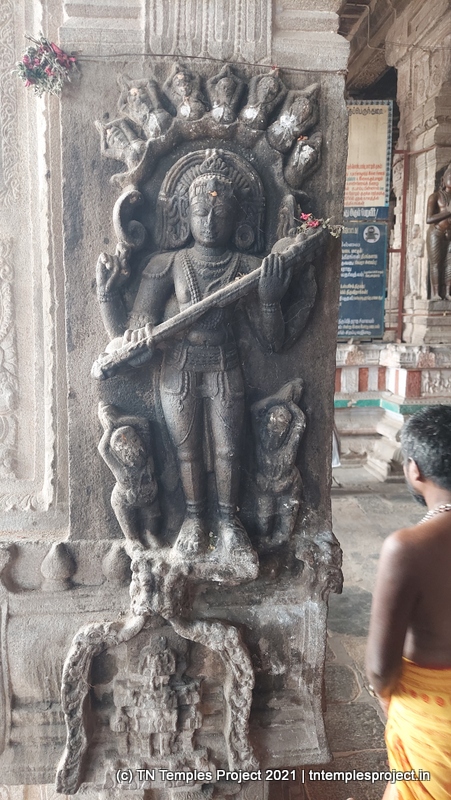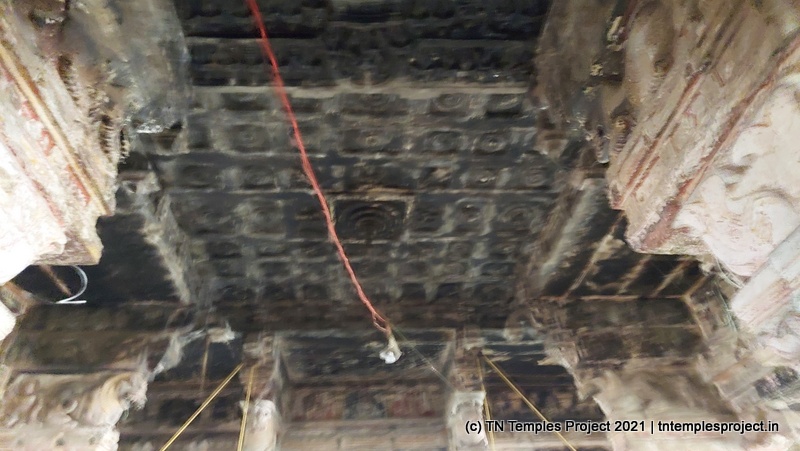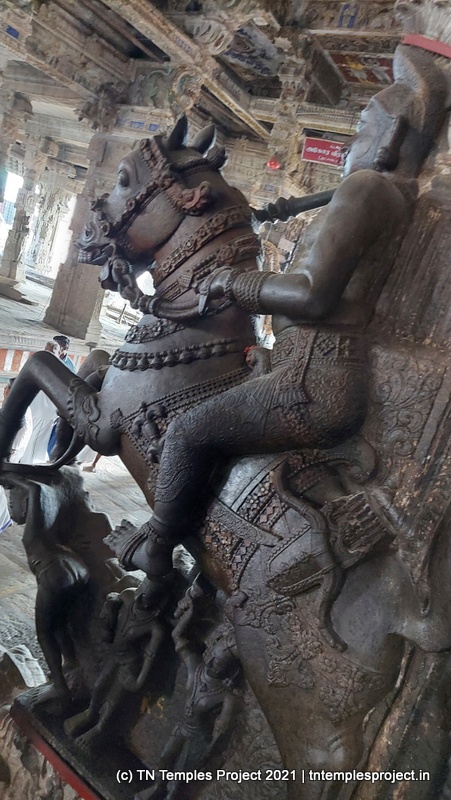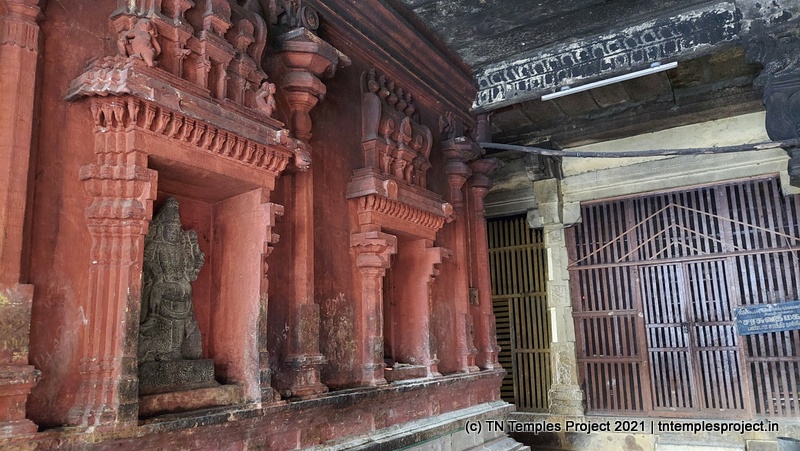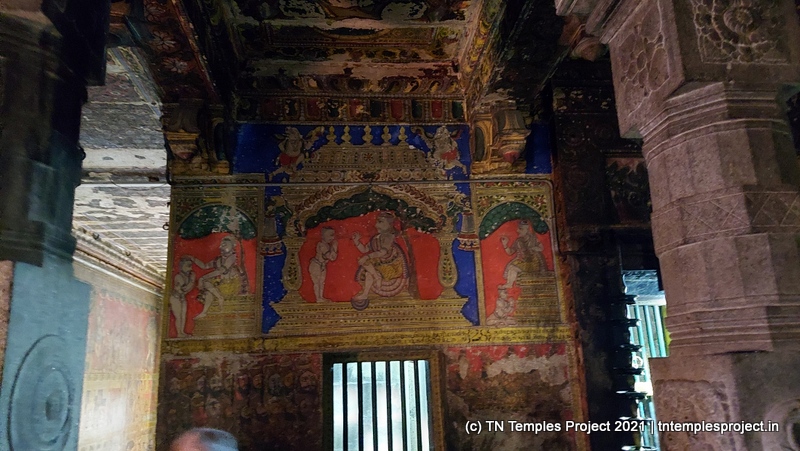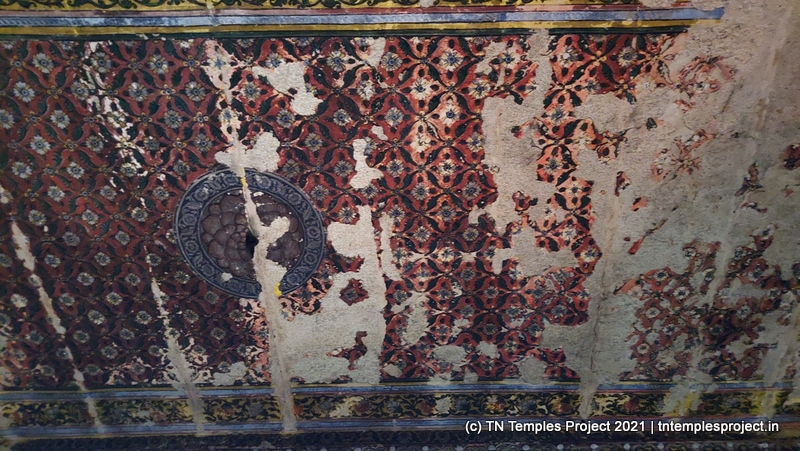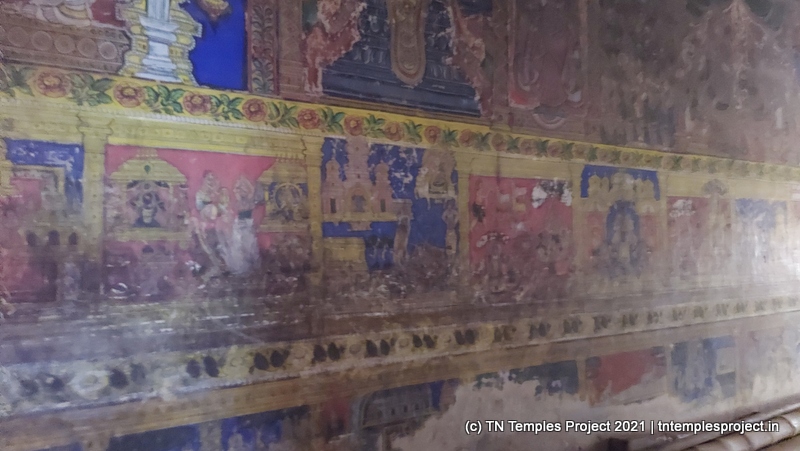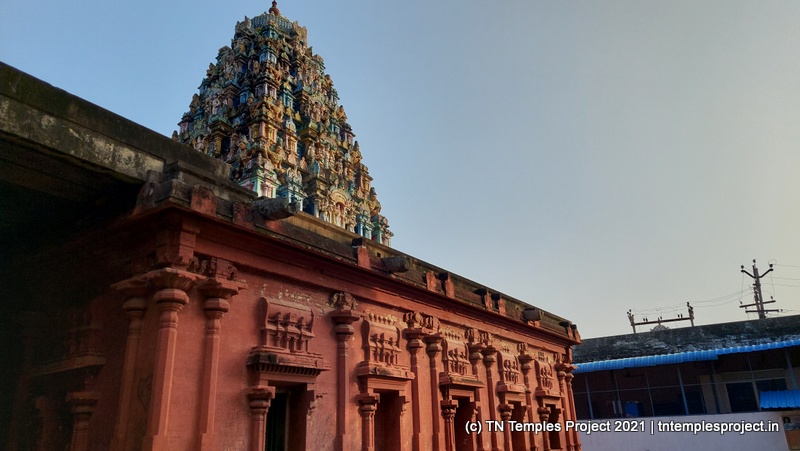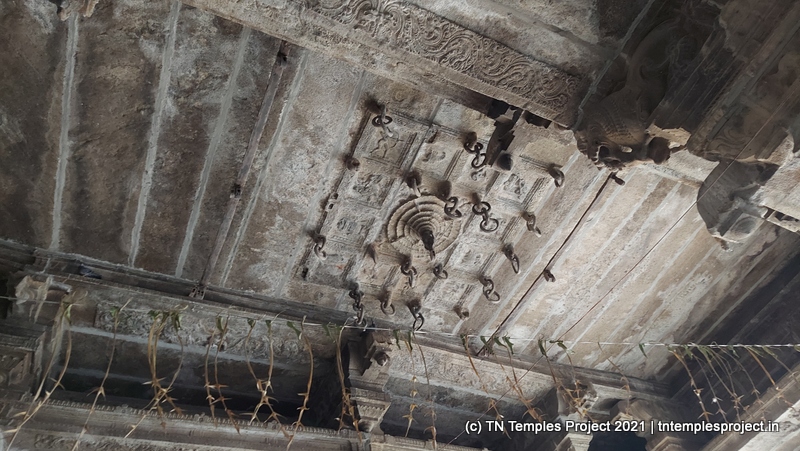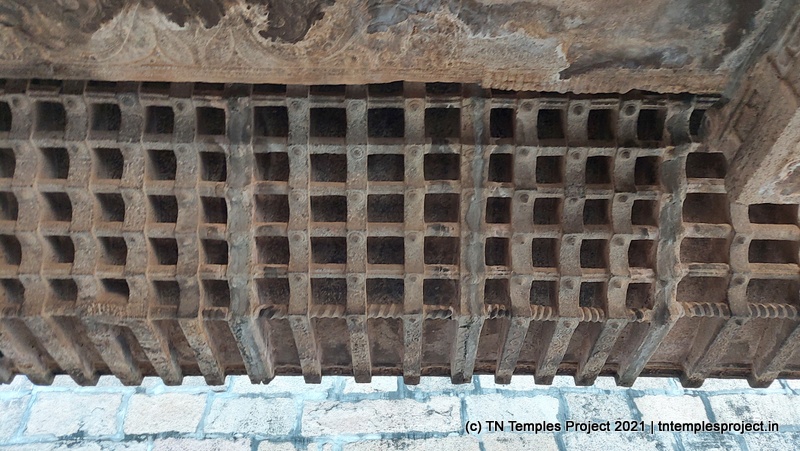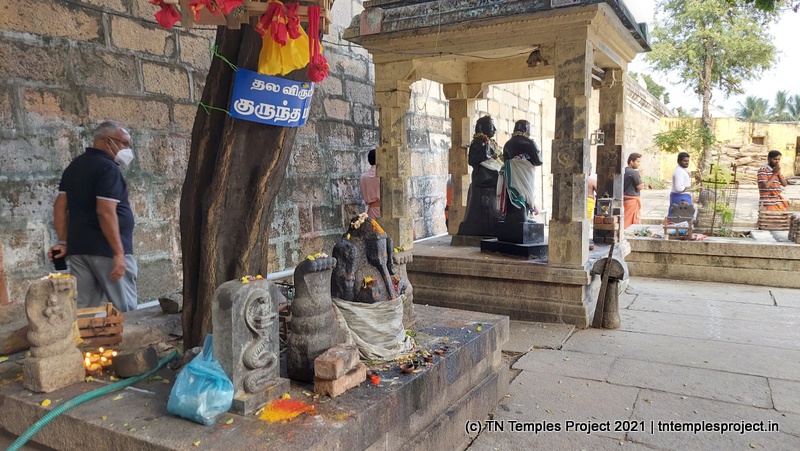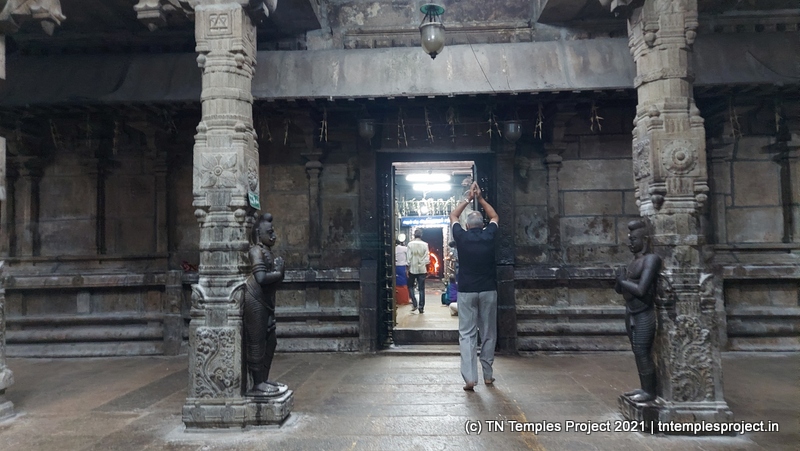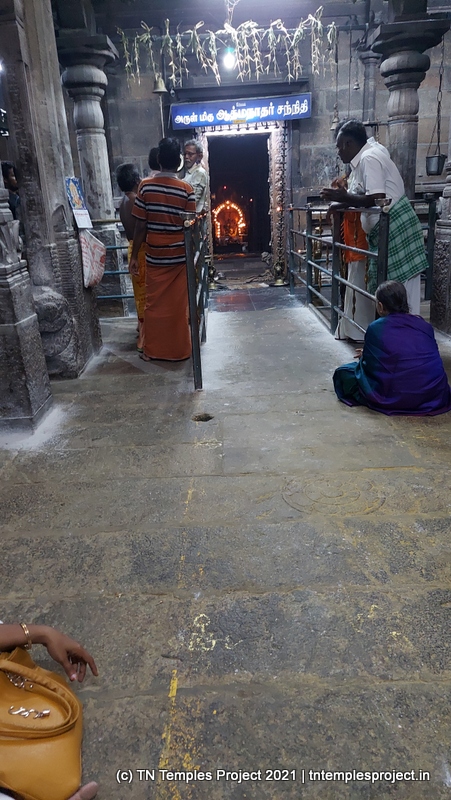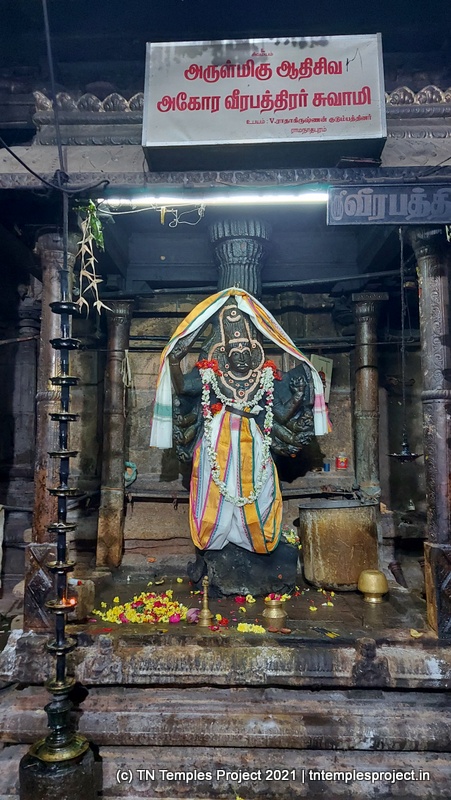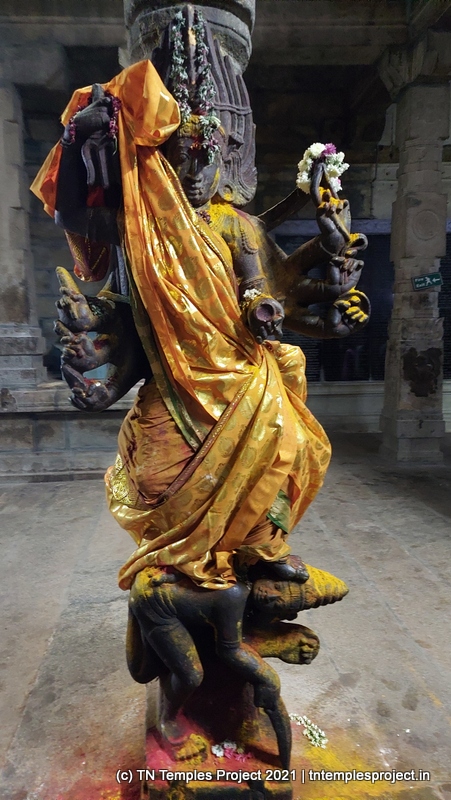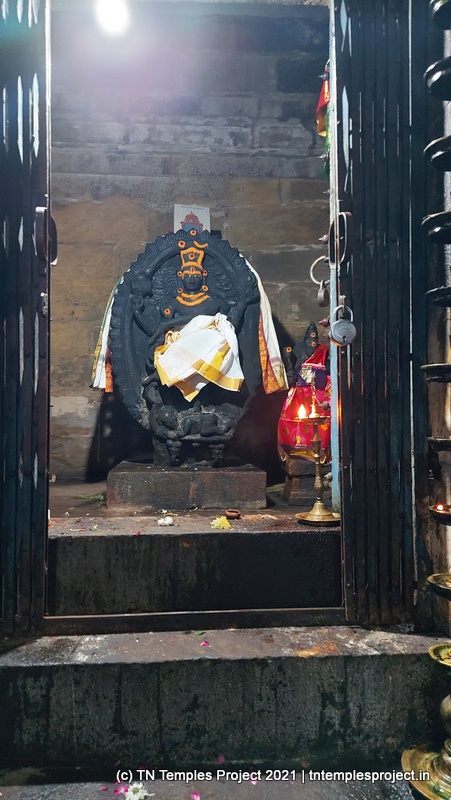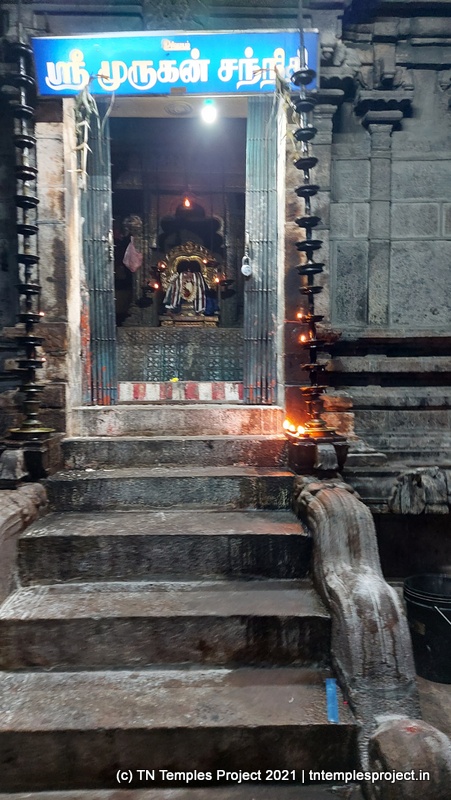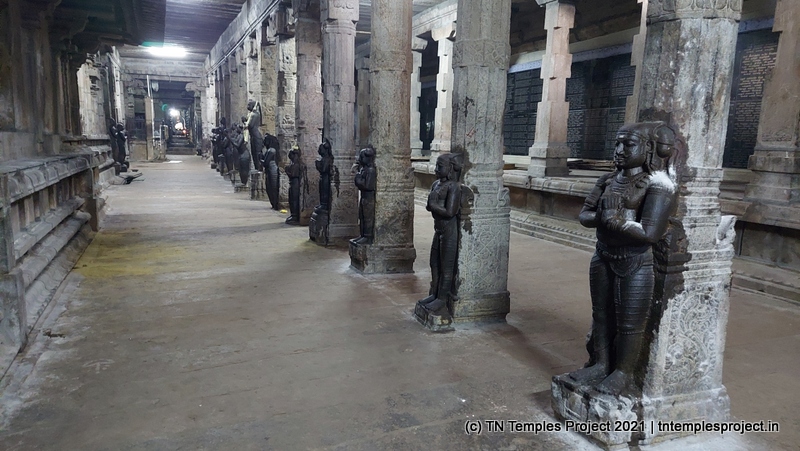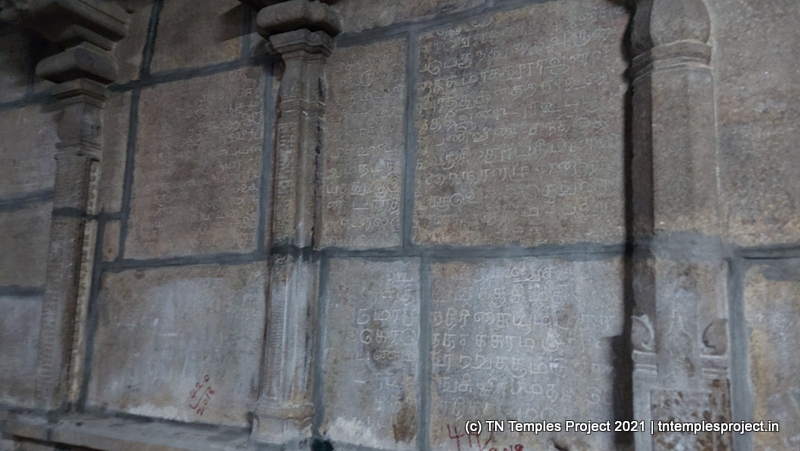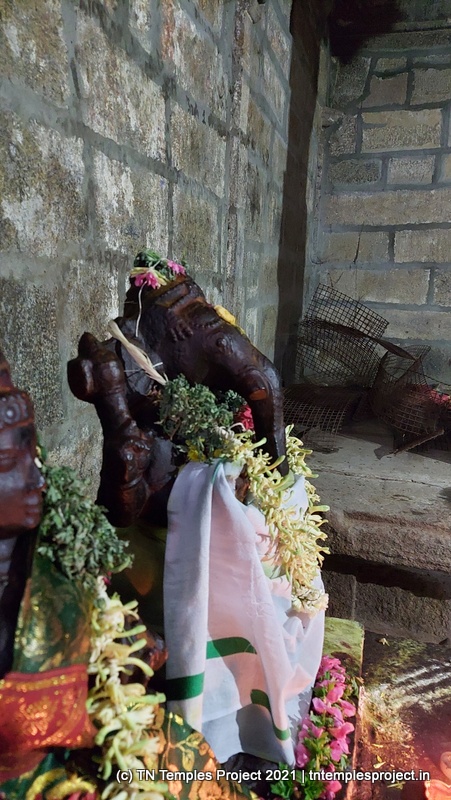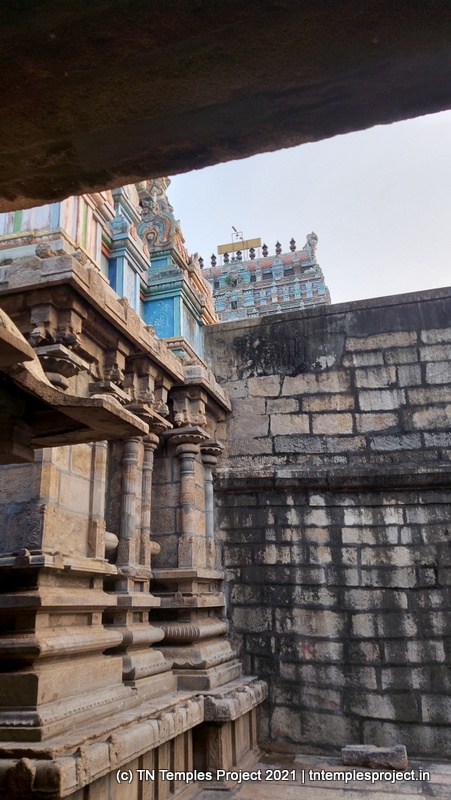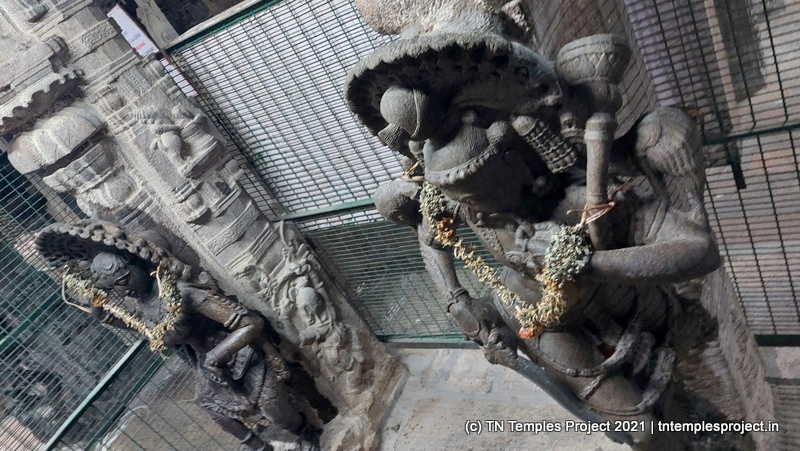Basic information about the temple
| Moolavar: | Atmanathar | Ambal / Thayar: | Yogambal |
| Deity: | Siva | Historical name: | |
| Vriksham: | Kurunthai | Teertham: | Tiruttama Poigai, Agni Teertham |
| Agamam: | Age (years): | ||
| Timing: | 6 to 12 & 4 to 9 | Parikaram: | |
| Temple group: | Vaippu sthalam | – | |
| Sung by: | Temple set: | ||
| Navagraham: | Nakshatram: | ||
| City / town: | Avudaiyar Kovil | District: | Pudukkottai |
| Maps from (click): | Current location | Karaikudi (36 km) | Pudukkottai (52 km) |
| Thanjavur (98 km) | Ramanathapuram (102 km) |
Location
Sthala puranam and temple information

It is very difficult to write about the Atmanathar temple at Avudaiyar Kovil, for the simple reason that there is so much to write about, and it is not easy to ignore some aspects. For the same reason, this is possibly the most written about temple in Saivism, on par with the Chidambaram Natarajar temple (more on this specific aspect, below).
In olden times, however, this place was called Tiruperunthurai, and this name is used in official and government documents even today.
Before we take a detailed look at the temple that is the Avudaiyar Kovil, or Tiruperunthurai, we should familiarise ourselves a little about the poet-saint Manikkavasagar, who is inextricably and intimately connected with this temple, in several ways.
Born in Tiruvathavur in a brahmin family of temple priests, sometime in the 9th century, Manikkavasagar was appointed as a minister of Varaguna Pandyan II (also known as Arimarthana Pandyan), who bestowed the title Thennavan Brahmarayan, indicating his origins and political status, on Manikkavasagar.
In ancient and Sangam literature, Tiruperunthurai is known by various names including Kokkozhi, Sivapuram, Akasa Kailasam, Chaturveda Mangalam, Vadavur and Adi Kailasam (the last of this is also associated with the nearby Kailasanathar temple).
Siva converting foxes into horses, and the Tiruvilaiyadal connection
Though born in a devout brahmin family, Manikkavasagar was a trusted minister under Arimardhana Pandyan, the Pandya king of the time.
On one occasion, the king entrusted his minister with a large sum of gold, to be used as payment against some horses that were being imported from the Arab kingdom. However, thanks to the extraordinary pull of the Lord, Manikkavasagar spent the entire money towards the construction of a fantastic and fascinating temple – this one at Tiruperunthurai – as he was drawn to a spiritual teacher who was preaching here (who later turned out to be Lord Siva Himself).
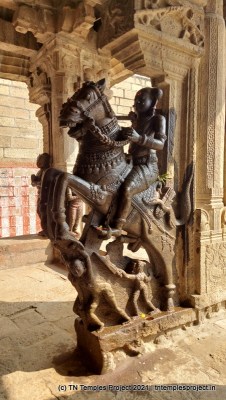
Believing that Manikkavasagar had stolen the money for his own use, the king had him imprisoned. The Lord came to His devotee’s rescue in the form of a horse trader, and after converting the foxes in the region into horses, sent them to the king. Realising he had falsely imprisoned Manikkavasagar, the king set his minister free. But that very night, the horses turned back into foxes!
The king now suspected that his minister was performing black magic, and so punished him by making him stand in the hot sand on the banks of the Vaigai river in Madurai, while carrying a boulder. In order to cool down the saint’s feet, Siva made the Vaigai overflow its banks. Again, the king grew desperate, and ordered his subjects to help in the effort to build an embankment.
An old lady, whose meagre earnings came from selling food to the labourers, could not support the work. In the guise of a young man, Siva approached her and offered to take up her share of the work, provided she fed him puttu (a dish made of rice and jaggery). But although she kept her word, the young mand started dancing around, instead of doing the work ordered by the king. When the king got to know of this, he ordered that the youth be whipped on his back, but as soon as the order was carried out, the king felt the whip lash his own back. Finally it dawned on him that he had unjustly punished his minister, who was a great devotee of the Lord, and all of these events were the Lord’s play. He immediately went to where Manikkavasagar was, and fell at the latter’s feet, seeking to be pardoned for his folly. Immediately, the flood waters receded. All of this was indeed the Lord’s play and therefore forms part of the Tiruvilaiyadal puranam.
There are several fascinating aspects of the temple, which we see in the sections below.
Worship of the formless
The garbhagriham does not have a Lingam, but only the avudai (base), and it is up to the devotee to internalise the formless nature of the divine. This is also representative of the fact that the increasing maturity of a devotee is demonstrated by their ability to contemplate on the formless, supreme Brahman. Therefore, Siva here is named Atmanathar.
The worship of formlessness is the core tenet of this temple, and therefore a recurring motif. In a manner similar to the moolavar here, Yogambigai Amman does not have a vigraham at this temple; instead, only her Holy feet are worshipped (more on this below).
Behind the avudai in the garbhagriham, are three lamps – the white one regarded as Suryan, the red as Agni, and the green as Chandran. Because Siva is formless here, the three lamps are considered as Siva’s three eyes.
Modern historians regard that the garbhagriham was built by Manikkavasagar in the 9th century CE.

Other sthala puranams
There are several puranams connected with this temple. One of them is actually the sthala puranam of the nearby Kailasanthar temple, where Siva comes down as Paramaswami and helps the brahmins of the nearby village regain their land from an avaricious minister of the Pandya king. This puranam is also depicted in the carvings in the Panchakshara mandapam – one of the 6 mandapams at this temple (see section on architecture, below).
Another sthala puranam here is about Amman, and specifically why She too is formless here. It is said that before immolating herself, Sati came here in spirit, to perform penance in order to be forgiven by Her husband Siva, for attending Daksha’s yagam despite the Lord’s instructions to the contrary. The feet that are presented in the Amman shrine are regarded as the footprints made by Her when She came to perform penance. later additions. Interestingly, even this pedestal with the feet can be seen only from a certain angle, through a latticed window.
Other sthala puranams here talk about Vishnu, Brahma and Indra, amongst several others, who worshipped at this temple. Each of them established tanks or Teerthams for worship of the Lord here, and many of these are still around in the vicinity of the temple. However, the Agni Teertham, which is located in the outer prakaram of the temple, is the one whose water is used for all of the temple’s proceedings. The other Teerthams that remain in existence today are: Siva Teertham, Deva Teertham, Muni Teertham, Asura Teertham, Sivaganga Teertham, Narayana Teertham, Brahma Teertham, 64 Koti Teertham, Tiruthotti Teertham, and Vayu Teertham.
The Chidambaram connection
Interestingly, there are several aspects that this temple shares with the other famous temple in Saivism, the Chidambaram Natarajar temple.
To begin with, both are south-facing temples. This is extremely rare, and seen in very few temples, as it represents Siva’s highest status – that of a Guru or Dakshinamurti (at Chidambaram, Siva is the Guru of Nandanar, the deekshitars who descended from the 3000 brahmins of yore, and all Saivites in general; at Tiruperunthurai, he gave deeksha to Manikkavasagar). Second, the formless is the core deity worshipped in both places – Akasa Lingam in Chidambaram, and just an avudai without Lingam here at Tiruperunthurai.
Another similarity this place shares with Chidambaram a separate mandapam which is copper plated (the Natarajar sabhai is gold plated in Chidambaram)
Chidambaram is generally known by the generic term Kovil, given its primacy in Siva worship. This place is called Avudaiyar Kovil, in the sense of it being the equivalent of Kovil (Chidambaram) but where only the holy Avudai is worshipped.
The family in which Manikkavasagar was born, wore a purva shikha (mun-kudumi), a standout feature of the deekshitars of Chidambaram.
Historical context, art and architecture
The temple’s architecture is originally medieval Pandya, Chola, later Pandya and Nayak – the amalgam of styles being because the temple lay on the border of the Chola and Pandya kingdoms. There have also been several contributions – structural and otherwise – by the Sethupatis, as also the Thondaimans of Pudukkottai. In particular, each of these dynasties has built a separate mandapam or sabha in the temple, including the Ananda Sabha, Kanaka Sabha, Chit Sabha, Deva Sabha, Natana Sabha and Panchakshara Sabha. As one can see, each of the sabhas are named after Saivite theological terms, and since this place has one more sabha than the 5 at Chidambaram, this place is called Atita Sabha.
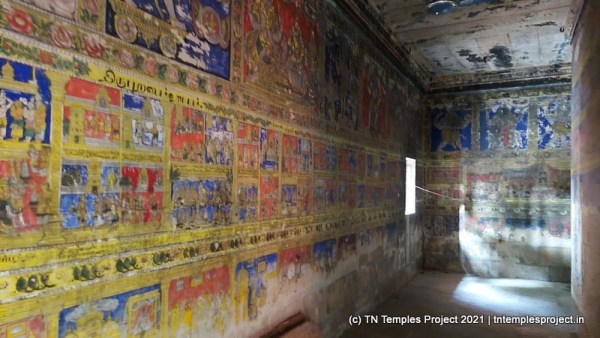
The temple has a 7-tier raja gopuram, but does not have a bali peetham or dhwajasthambam. Also, because Siva is all-encompassing here, there is no Nandi or Chandikeswarar, or even Dakshinamurti here (since Siva Himself is the Guru and faces south).
The temple’s extensive yet intricate architecture, as well as all of the vegetable dye art, are truly spellbinding and a testimony to the skill of the sculptors and artists of the period. What makes it even more stupendous is that the entire temple is made of granite, which is an extremely hard and difficult material to work with.
Upon entering from the south, the first structure is a large mandapam with several interesting sculptures inside, including those of different horses, the guards of the time, etc. In particular, one is struck by the detail and finesse of these works, which is a testament to the lasting skill of the sculptors and stapathis of the time. On the left is a mandapam housing a shrine for Manikkavasagar, which is at a slight elevation.
After this is the raja gopuram, followed by a mukha mandapam. On the left, is another shrine for Manikkavasagar, in front of which are several pillars with beautifully carved bas relief images of the Navagraham deities. On the ceiling of the entrance to the Manikkavasagar shrine is a rasi mandalam depicting the 27 rasis.
Straight ahead is the garbhagriham, around which is the inner prakaram housing shrines for Amman, Murugan, and other deities, as well as a kurundhai tree in stone.
While there are several important and interesting elements of architecture at this temple, some of the key ones that should not be missed, are
- Depiction of maidens of the time, replete with jewellery that is significantly advanced for the fashion standards of the period
- Extremely refined and nuanced sculpting, to the point of showing veins, defined toenails, braided hair, etc on the sculptures
- Lifelike sculptures of two different breeds of horses – both the local variety (Pancha Kalyani with a white forehead, on which a rider – assumed to be Siva – is seated) as well as the Arabian type (Davumbari) which were imported around the time of the temple’s construction (and consistent with the sthala puranam)
- Sculpture of Veduvachchi, a woman from a hill-dwelling tribe, depicted with a basket made of palm fronds (this type of people used to make a living as fortune-tellers)
- Depiction of a monkey and the udumbu (a creature resembling the Komodo dragon, which was a rarity in the region during the time of the temple’s construction).
- In the mandapam in the western side of the prakaram, is a rasi mandalam on the roof. Hanging from this are 17 different chain-links, where the individual rings are movable. But the stunning part is that these are all entirely made of stone.
- Kodungai (or kodukkaI) – stone representation of the thick steel wires used in the roof awnings, sculpted in circular and twisted forms, as well as with 4, 5, 6 and 8 sides.
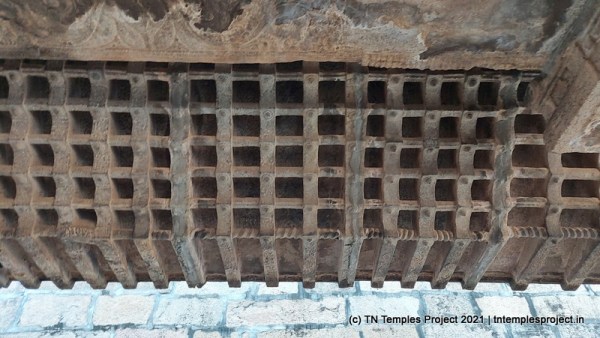
The kodungai here is regarded as so exquisite, that in olden times, sculptors and stapathis who accepted work for temples, would commit to giving the highest quality output, except that they would not be able to achieve the skill of the Tiruvalalchuzhi palagani (latticed woodwork), Taramangalam Kailasanathar temple sculptures, Tiruveezhimizhalai Vavvaal nethi mandapam, Punjai (Tirunanipalli) kodivattam, and the Avudaiyar Kovil kodukkai!
Unique aspects of worship at Tiruperunthurai
There are several unique aspects about this temple and its functioning. For a start, as mentioned earlier, there is no Lingam here representing the moolavar. Instead, a silver container is upturned and kept on the avudai (base of the Lingam) during the deeparadhanai. Even more interesting is that the deepam is shown to devotees from the garbhagriham itself and is not brought out. One interpretation for this is that because Manikkavasagar has been taken into Siva’s effulgence, and this temple is entirely associated with that saint, the Jyoti in the form of the deepam does not leave the garbhagriham and is not shown to devotees.
Normally temples are closed during eclipses, but not so at this temple where the usual 6-times a day puja continues, which is quite rare. During neivedyam, steaming hot boiled rice is placed on the avudai, and it is the formless vapour that is actually the neivedyam for the Lord! Devotees and the temple officials also offer bitter gourd and greens (spinach) as part of the neivedyam to the Lord – this is because in the sthala puranam of the nearby Kailasanathar temple (which puranam is also associated with this temple), the locals offered Paramaswami food that included rice, greens and bitter gourd.
Because the temple’s construction, architecture and spiritual significance were significantly ahead of its time, there has always been a local belief that the temple is of other-worldly origin, and built by goblins or Siva’s bhuta ganas.
Arunagirinathar has sung about Murugan at this temple, in his Tiruppugazh.
Manikkavasagar, Tiruvasagam, and the supreme knowledge
Lord Siva is said to have given deeksha to Manikkavasagar here, in three ways – netra (with His eyes, ie by looking intently at the saint), sparsa (with the body, ie by touching) and pada (by placing His holy feet on the saint’s head). These are said to have taken place under the kurunthai tree in the northwest corner of the outer prakaram of the temple.
Such was the saint’s devotion to Siva, that the Lord is said to have made out specific instructions, that it would be Manikkavasagar’s vigraham that would be used in all the processions of the temple. Therefore, that is what happens even today, that Manikkavasagar (and not Siva) rides on Nandi. Perhaps because of this, Manikkavasagar is often considered as an earthly form of Siva.
There are two separate shrines for Manikkavasagar at this temple – Nandikesa Manikkavasagar and Sivananda Manikkavasagar

The temple – which is also a Tevaram Vaippu Sthalam – is of deep spiritual significance in Saivism and is said to be the origin of Manikkavasagar’s great spiritual work, the Tiruvasagam. It is said of the Tiruvasagam
திருவாசகத்திற்கு உருகாதோர், ஒரு வாசகத்திற்கும் உருகார்’
(if the Tiruvasagam does not make one melt, nothing else will).
It is also said of the Tiruvasagam, that when Manikkavasagar went to Chidambaram later in his life, an old man approached him and asked him to recite the Tiruvasagam. The saint heeded the request, and the old man wrote it down. The following morning, the palm leaf manuscript was seen inside the garbhagriham of the temple, with the annotation that it was dictated by Manikkavasagar, and written by Chitrambalathan (referring to Siva Himself as the Lord of Chitrambalam, ie Chidambaram).
During the temple’s many festivals, it is Manikkavasagar whose vigraham is taken out in procession, since the saint is treated as the equivalent of Lord Siva here!
Other information for your visit
Contact
Phone: 94443 61581
Contact: 04371 233301
Gallery
